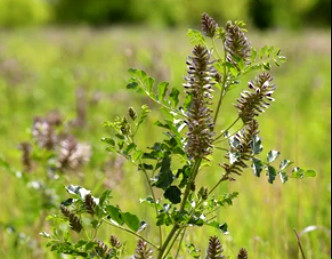Glycyrrhiza uralensis (Licorice) Transformation
Glycyrrhiza uralensis is a perennial herbaceous plant, with high economic value, planting Glycyrrhiza uralensis can promote the development of local economy and improve the economic income of farmers. Wild Glycyrrhiza uralensis resources tend to be depleted due to over-excavation, and artificial cultivation of Glycyrrhiza uralensis has become the primary way to alleviate the contradiction between supply and demand. However, the content of Liquiritin, a medicinal ingredient in Glycyrrhiza uralensis, is low. Therefore, it is essential to establish an efficient genetic transformation system for Glycyrrhiza uralensis and to study the function of the genes related to the synthesis of Liquiritin and its mechanism of action to improve the quality of Glycyrrhiza uralensis. It has become an essential part of Glycyrrhiza uralensis quality improvement research.
Lifeasible is committed to providing high-quality plant genetic transformation technology services, exploring the simplification and optimization of transformation conditions to establish a more efficient genetic transformation system for Glycyrrhiza uralensis, and providing technical support for its transgenic operation. Our technical service, which utilizes biotechnology to transform specific Glycyrrhiza uralensis varieties genetically, is of great significance in promoting the excavation of important genetic resources and the breeding of high-quality varieties of Glycyrrhiza uralensis.

What do we offer?
- EXplant selection and preparation. The selection of suitable explants is the key to the success of transformation. According to that, the decidualized embryo is the most suitable explant for in vitro regeneration and genetic transformation of Glycyrrhiza uralensis.
- Preparation of culture medium. A suitable culture medium was formulated to promote the differentiation and growth of the explants. For example, MS medium was used with appropriate plant growth regulators such as 6-BA (6-benzyl adenine) and NAA (naphthalene acetic acid) concentrations.
- Agrobacterium preparation. Agrobacterium rhizogenes was utilized as a vector to mediate the transformation of Glycyrrhiza uralensis with the critical gene for Glycyrrhiza uralensis glycoside synthesis. Agrobacterium needs to be cultured on a YEB solid medium containing antibiotics to screen for strains containing recombinant plasmids.
- Invasion of explants. We co-cultured exosomes with Agrobacterium for T-DNA transfer. The infestation conditions included bacterial concentration, infestation time, co-culture time, and AS (acetosyringone) concentration. We utilized the Agrobacterium-mediated transformation system to optimize the transformation conditions, and the transformation rate was up to more than 90%.
- Screening and regeneration. Screening was performed using specific reagents to select transformed cells.
- Regeneration & culture. Screened transformed cells are induced to differentiate in a suitable medium to form regenerated plants.
- Molecular detection. We detect the integration of exogenous genes by PCR, Southern blot, and other molecular biology methods.
- Culture of transgenic plants. The successfully transformed plants were transferred to the greenhouse for further cultivation to form mature transgenic plants.
Our service process

Our research objectives for Glycyrrhiza uralensis transformation
- Improve the content of medicinal ingredients. Wild Glycyrrhiza uralensis resources tend to be depleted due to over-excavation, and artificial cultivation of Glycyrrhiza uralensis has become a significant way to alleviate the contradiction between supply and demand. However, the content of Liquiritin, a medicinal ingredient in cultivated Glycyrrhiza uralensis, usually does not meet the pharmacopoeial standard. Therefore, improving Liquiritin content through genetic transformation technology is one of the essential objectives of the study.
- Establishment of an efficient genetic transformation system. Currently, the regeneration system of Glycyrrhiza uralensis has poor stability and lacks an efficient genetic transformation system. One of the research objectives is to establish an efficient and stable genetic transformation system for Glycyrrhiza uralensis to facilitate the research on Glycyrrhiza uralensis quality improvement.
- Research on gene function and its mechanism of action. Through the genetic transformation system, we will study the function of Glycyrrhiza uralensis glycoside synthesis-related genes and their mechanism of action and provide a theoretical basis for the molecular breeding and genetic engineering improvement of Glycyrrhiza uralensis.
Why choose us?
- Efficient conversion system. We have established an efficient transformation technology system by optimizing the transformation conditions according to the problems in genetic transformation of licorice.
- High success rate. Our advanced technology platform and experienced team of experts can ensure the success rate of experiments and help customers save time.
- Perfect technical service. We provide Agrobacterium transformation method, which can carry out plant genetic transformation quickly, efficiently and stably. In addition, there is no seasonal restriction on implementing our transformation projects, and we can carry out experiments at any time.
Lifeasible is committed to plant genetic transformation research, and the genetic transformation service we provide for Glycyrrhiza uralensis is expected to enhance further the medicinal value and production efficiency of Glycyrrhiza uralensis, as well as provide a scientific basis for its conservation and sustainable utilization. If you are interested in us, please feel free to contact us.
For research or industrial raw materials, not for personal medical use!

